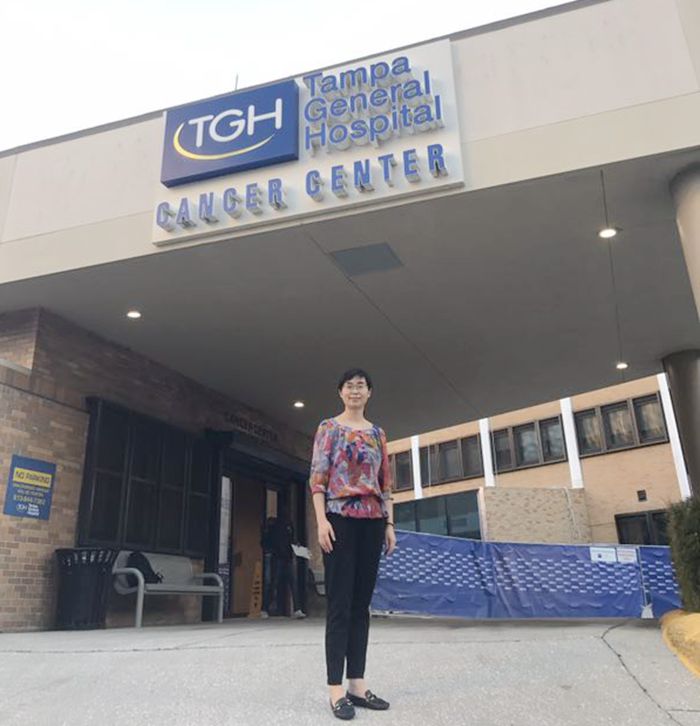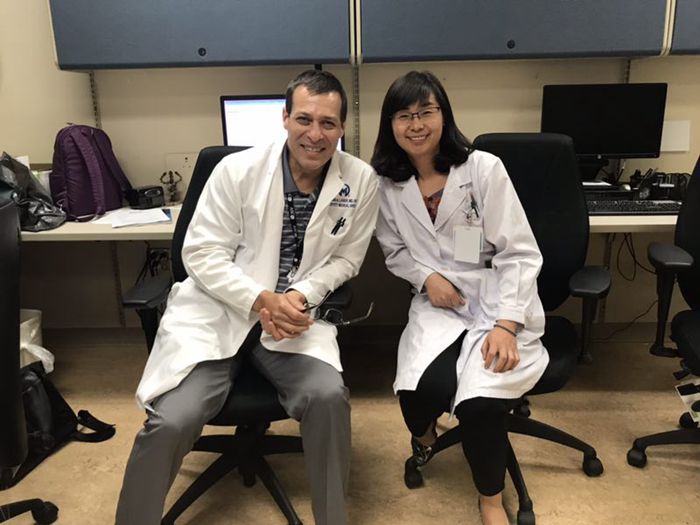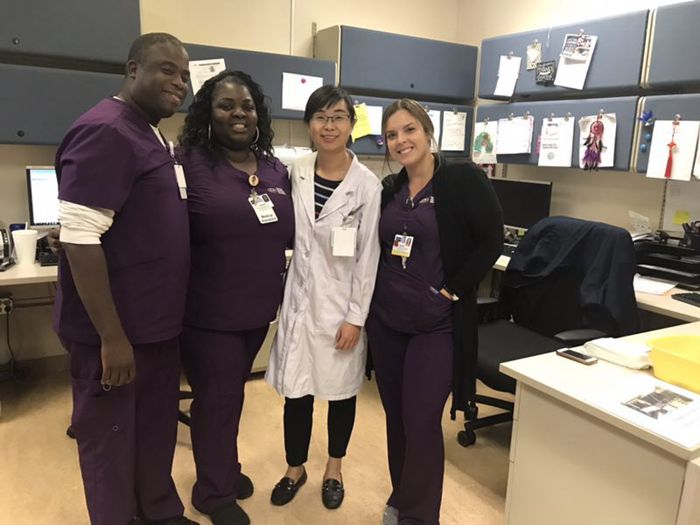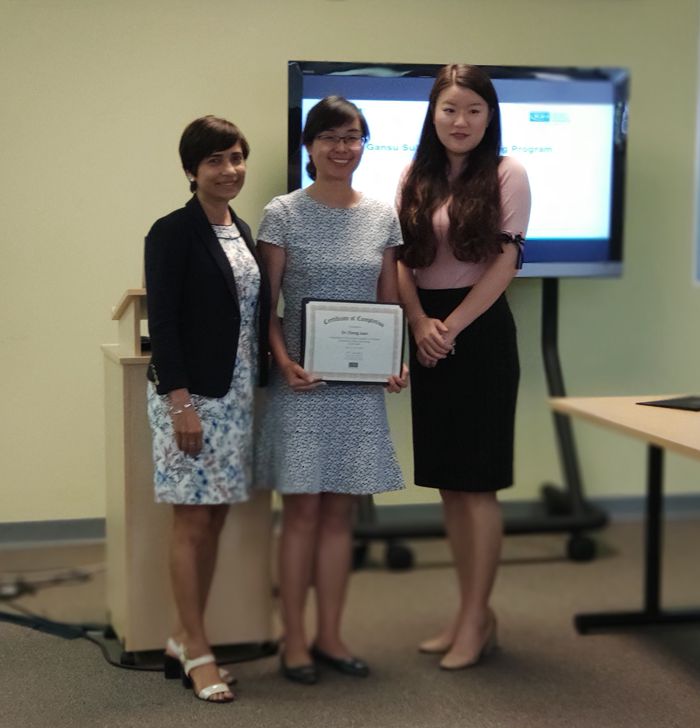Studying at the Tampa General Hospital
date:2020/1/16 11:37:14 hot:1999
Between April and August 2019, as an observer, I have accomplished a four-month observation program at the Tampa General Hospital (TGH), a teaching hospital of the University of South Florida. TGH, located on the beautiful Davis Island in Tampa is a private, non-profit hospital. It was built in 1926 with about 1011 beds and 6,700 employees in the hospital, including about 1,631 medical employees. This hospital enjoys a good reputation in South Florida.
Tampa is a coastal city with a pleasant climate, sunny, warm and delicate. It is known for its blue sky, clear sea water, wet air, ample rainwater and the perennial lush vegetation.

The department I visited is Cancer Center of TGH, and my teacher Dr Laber who is patient, enthusiastic, meticulous, pays much attention to how to communicate with patients. He always tells patients about the condition, prognosis, treatment plan of their diseases in a sincere manner, and answers every question of the patient patiently. He is an Argentine-born senior hematologist asnd oncologist. His medical team is composed of two attending physicians, four fellow doctors, one pharmacist and a number of resident doctors. During my academic visit, I was guided by Dr Laber and other senior physicians in this medical team to see outpatients, consult inpatients from other departments, take part in the ward rounds in the inpatient department, participate in teaching rounds and teaching meetings occasionally. During learning and observing at TGH, I found that the type of tumors in the United States is quite different from that of in China: the most commonly seen tumors in the U.S. includes rectal cancer, colon cancer, prostate cancer, bladder cancer, breast cancer and so on, but there are few gastric cancers which is common in China. I gained a lot of knowledge throughout the process and experienced the difference medical care between Chinese and American personally.

Firstly, most of the cancer patients in the United States undergo chemotherapy at the infusion center of the clinic and return home to have a rest on the same day. The follow-up chemotherapy would be taken here according to the established plan on time. There are 20 infusion rooms in the infusion center of the clinic, and the facilities in each infusion room are fully equipped. Some special nurses are responsible for the chemotherapy observation of the outpatients. This treatment mode is significantly different from our hospital where most patients need to be hospitalized.
Secondly, the patient is always the first one to know the condition of his disease, decide whether to tell his family and how to choose the diagnosis and treatment by himself.
Finally, during the entire observation, I was most impressed by the attitude of tumor patients toward their own illnesses and their life. Most of them were so optimistic, positive, and truly faced with their own illnesses condition. They still worked as usual during the entire treatment process, which was not only a requirement of medical insurance, but also a reflection of their social value. The chemotherapy plan was combined with their daily work schedule. Almost every patient paid attention to the details of his life, and also the personal image in the treatment process. Everyone tried their best to live as happy as normal people.

Time flies, four-month observation ended soon. This visit has broadened my horizon, increased my professional knowledge as well as work experience and showed me the direction of my future work. I will do my best to contribute to the development of our hospital.

By Cheng Juan/ Lin Juanzhen
Edited by Office of International Cooperation and Communication

